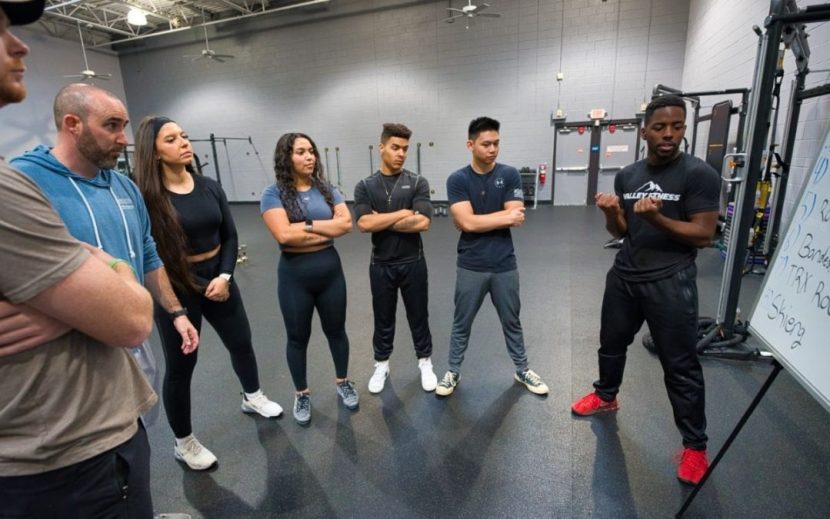Kate Rowe-Ham, 48, serves as a menopause fitness coach and is part of the expert panel for the Women’s Health UK Collective. After years of intense involvement in numerous HIIT and spin classes each week, she now copes with her perimenopause symptoms through a blend of walking and strength training. I was in my early […]

Kate Rowe-Ham, 48, serves as a menopause fitness coach and is part of the expert panel for the Women’s Health UK Collective. After years of intense involvement in numerous HIIT and spin classes each week, she now copes with her perimenopause symptoms through a blend of walking and strength training.
I was in my early 40s when debilitating anxiety, breathlessness, and joint discomfort began to interfere. This was the year following the birth of my third child—and initially, I attributed these issues to simply being an exhausted mother, on top of teaching five spin classes and six HIIT classes weekly. It wasn’t until I embarked on researching my fatigue that I discovered the root cause: perimenopause.
At age 44, with every source pointing me toward strength training, I embraced weightlifting, gradually increasing to three to four workouts per week, while reducing my HIIT classes to just one weekly. The effects were almost immediate; within a month, my fatigue improved significantly, and my anxiety diminished. However, it was the addition of walking to my routine—an adjustment required due to lockdowns—that made a notable impact on my pain levels as well.
When the gyms shut down in March 2020, I commenced strength training at home, but feeling a strong desire for the outdoors, I also began walking for an hour every day. Hip joint pain had long been my most debilitating symptom (as estrogen plays a role in reducing inflammation by regulating cortisol levels, and my estrogen had significantly decreased). Walking enhances the circulation of synovial fluid—the lubricant found in your joints; after several weeks, the discomfort nearly vanished. Additionally, walking provided a sense of grounding like nothing else; maintaining a consistent pace and slow breathing activates the parasympathetic nervous system, providing a calming effect.
Currently, I possess a heightened appreciation for physical activity. Through weightlifting and walking, I’ve established a routine that reconnects me with my body while preparing it for future challenges. If I ever required validation of the importance of collaborating with my aging body, it was evident when I participated in the London marathon. The first time I ran it, at 21, I engaged in multiple long runs weekly. Over twenty years later, I blended runs with weight training and walking, and I still finished with the exact same time: 3 hours 47 minutes. Perimenopause does not signify less exercise, it merely indicates a different approach to physical activity.
What are the advantages of walking and strength training in your 40s?
As a menopause fitness coach, Rowe-Ham states: ‘Estrogen—vital for muscle growth—diminishes, leading to muscle mass decline. Strength training counters this by fostering hypertrophy—a process where muscles break down and subsequently regenerate stronger. Regarding walking, research indicates that consistent walking may alleviate hot flushes by lowering cortisol levels in the blood, while additional studies reveal that merely 10 minutes of brisk walking enhances sleep quality by balancing hormones.
‘Combining strength training and walking also helps stabilize blood sugar levels. Estrogen aids in insulin secretion; decreased estrogen results in lower insulin, leading to excess glucose in the blood since insulin regulates glucose use for energy. This can heighten weight gain, and the risk of diabetes and cardiovascular diseases.
‘Both resistance training and walking have demonstrated the ability to increase bone density by stimulating osteoblasts through impact as you step. This is crucial, as low estrogen leads to decreased vitamin D and calcium levels, resulting in weaker bones. Recent research indicates that completing 4,000 steps daily may lower your risk of osteoporosis.’
How frequently should women in their 40s walk each week?
‘Strive to walk for 30 to 40 minutes every day, or approximately 4,000 steps. However, remember that any amount of walking is better than none. Additionally, keep in mind that perimenopause is not a straightforward journey; some days, you may feel capable of 40 minutes, while on others, just 10 minutes might be all you can manage.’
How often should women in their 40s strength train per week?
‘Aim for one upper-body, one lower-body, and one full-body strength session per week, each lasting between 35 and 45 minutes. Exceeding this frequency can unintentionally worsen symptoms by heightening cortisol levels. Alternate days of strength training with walking days; walking can alleviate DOMS (Delayed Onset Muscle Soreness) by promoting blood circulation.’
Read now: I enhanced my walks with a weighted vest
Related articles:

Bridie is the Fitness Director at Women’s Health UK. She dedicates her time to exploring new workouts, fitness launches, and the finest home gym equipment, ensuring that you have everything needed to achieve your fitness goals. Her articles have been featured in Stylist, Glamour, Cosmopolitan, and more. Additionally, she is a part-time yoga instructor who occasionally dozes off during savasana (but never when she’s teaching, she promises).

















